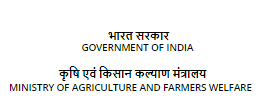Tractor Driven Portable Feed Block Maker
Background:
Presently, there is no standard machinery available for making feed blocks. Most of the machines employ a screw or hydraulic pressure (Yadav et al., 1993) for making blocks, whereas Berwal et al. (1993) used a hand-operated machine. Parveen Kumar et al. (2004) employed a densifying machine where the time taken for each block of 05 kg was five minutes and the dimension of the jacket was 12 x 12 x 18 inches. Singh et al., (2004) made compacted blocks using a feed block formation machine. It consisted of a feeding chamber, compression chamber, feed block retention chamber, hydraulic cylinders, power pack and electric control panel. They reported that feed blocks of square cross-section (20 x 20 cm) and of varying thickness for all kinds of feed materials could be prepared using this machine. These are a stationary type of feed block making machines so they cannot be ported from one place to another place. Keeping in mind this drawback we have developed Tractor Driven Portable Feed Block Maker, which can go to the places where wheat straw is being threshed out under field conditions and moreover, tractors are available at every village.
The densified complete feed block technology offers a variety of benefits to the farmers and the feed manufacturers. This could be a promising technology for the regions where there is a perennial shortage of green forage and the dry roughages are also in short supply and are being transported from outside. The advantages are: a promising way to feed a balanced ration to ruminants; an efficient nutrients delivery system – less feed wastage; time as well as labour saving - respite to women; feed as blocks require lesser storage space; densified feed cheaper and easier to transport; better way to manage crop residues and reduce pollution; improved productive and reproductive performance; lesser methane emission from animals; better health status; feed banks can be set up as a pre-emptive disaster management measure; scope for value addition – blocks as a vehicle for medicine or nutraceutical administration and better economic returns through providing stability in feed and milk prices.
Technology Details:
To improve the feeding value of crop residues various technologies are adopted. These could be broadly classified as follows: Increasing the protein content by the addition of non-proteinous nitrogen sources like urea-ammoniation techniques. Improving digestibility through physical means like chopping, grinding, etc. Supplementing crop residue with tree fodder/concentrates and feeding either as complete feed in the form of mash, pellets or compressed blocks. In the preparation of enriched crop residue-based feed blocks, all the above technologies are woven together in one way or another. The urea treatment of straws by and large increases the crude protein content two to three-fold. With wheat straw, urea treatment increased the crude protein from 3.9 to 9.8%. According to Verma et al. (1996), feeding compressed complete feed blocks to Murrah buffaloes resulted in a higher intake of DM, digestible DM and all other nutrients than feeding the diet in mash form and also resulted in higher retention of calcium and phosphorus.
Tractor driven portable feed block maker has advantages over Stationary type feed block making machine that it can move the field to field for compressing the wheat straw blocks otherwise wheat straw in loose form has to be brought near to fixed/stationary type of block making machine. It is operated by the hydraulic pressure of the tractor so it is very cost-effective and easily operational.


